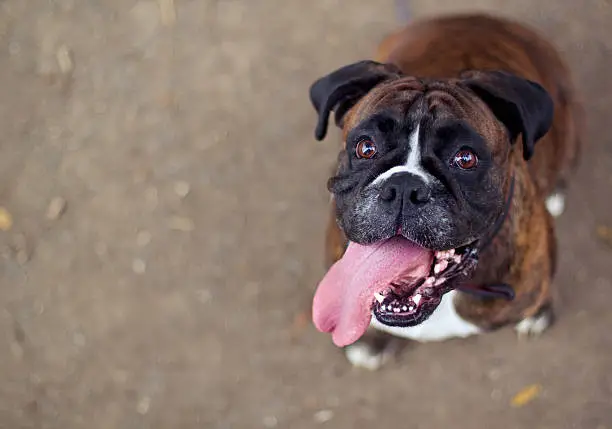Exercises to avoid with boxers prone to hip dysplasia
Boxer dogs are renowned for their power, agility, and limitless energy. Boxers may be susceptible to hip dysplasia, a disorder where the hip joints do not develop correctly, much like many bigger dog breeds. Numerous canines, including our beloved boxers, are afflicted with hip dysplasia, a common orthopedic ailment. The hip joint becomes loose or unstable as a result of improper hip joint development. Dogs with hip dysplasia may have pain, discomfort, and movement problems that reduce their overall quality of life. It is essential for conscientious pet owners to comprehend how activity affects hip dysplasia and to take appropriate action to stop additional harm. In order to preserve your beloved pet’s health and fitness, we will look at activities that should be avoided while working out boxers that have hip dysplasia and provide substitutes. Come along.
GREENIES PILL POCKETS for Dogs Capsule Size Natural Soft Dog Treats is an excellent product worth purchasing. This makes giving your dog medication simple and has a delicious hickory smoky taste that they’re sure to like. Why feed your pet an unhealthy, all-natural dog treat when you can conceal their medication in human foods like cheese or peanut butter? In addition to trace nutrients, this is produced using natural, authentic ingredients. Veterinarian-created GREENIES Pill Pockets Dog Treats hide the taste and odor of any medication, reducing the stress and mess associated with administering medication to your dog. These smaller Pill Pockets for capsules make taking medication enjoyable for your dog, whether they are tiny or big breed. Buy now
Avoiding Hip Dysplasia Exercises in Boxers
Importance of Exercise for Boxer Dogs with Hip Dysplasia
Even Boxers with hip dysplasia need exercise regularly for their general health. Regular exercise builds muscles, increases joint mobility, stimulates the mind, and aids in maintaining a healthy weight. In addition, it may assist afflicted dogs in reducing stiffness and pain. But it’s important to choose the correct workouts that are easy on the joints and customized to the specific requirements of Boxers with hip dysplasia.
While activity is good for Boxer dogs with hip dysplasia, certain activities should be avoided or adjusted. Jumping, hard running, and rough play are high-impact activities that may exacerbate joint instability and hurt. Instead, it is advised to engage in low-impact workouts including swimming, leash walks, and controlled movements on flat surfaces. It’s crucial to begin with brief sessions and progressively increase the time and intensity dependent on how comfortable the dog is. A safe and efficient exercise program may be created for Boxers with hip dysplasia with the assistance of a veterinarian or a canine rehabilitation professional.
Identifying to avoid with boxers prone to hip dysplasia
Boxer owners should be aware of specific exercises to stay away from doing during workouts in order to avoid additional harm or pain. The following workouts are not recommended for Boxer dogs that are prone to dysplasia.
1. Activities with high impact
Avoid high-impact workouts like leaping or landing on hard surfaces. These activities have the potential to overstress the joints, aggravating the dysplasia symptoms. Choose low-impact exercises that are easier on the joints as an alternative, including swimming or walking on soft terrain.
2. Agility training
While agility courses highlight a Boxer’s inherent athleticism and agility, they often demand repeated maneuvers, quick pauses, and sharp twists, which may put further pressure on the breed’s already delicate joints. Instead, think about altering the course or looking for other methods to challenge your Boxer’s body and mind.
3. Long-distance running
A dog with dysplasia may have joint pain from long distance running. Avoiding extended runs in favor of well timed, brief bursts of exercise is advised. The risk of damage is decreased by regular rests and intervals that give the joints time to recover.
GREENIES PILL POCKETS for Dogs Capsule Size Natural Soft Dog Treats is an excellent product worth purchasing. This makes giving your dog medication simple and has a delicious hickory smoky taste that they’re sure to like. Why feed your pet an unhealthy, all-natural dog treat when you can conceal their medication in human foods like cheese or peanut butter? In addition to trace nutrients, this is produced using natural, authentic ingredients. Veterinarian-created GREENIES Pill Pockets Dog Treats hide the taste and odor of any medication, reducing the stress and mess associated with administering medication to your dog. These smaller Pill Pockets for capsules make taking medication enjoyable for your dog, whether they are tiny or big breed. Buy now
4. Climbing stairs
Frequent stair climbing and descending might place too much strain on the joints. If doing stair-like exercises, be sure to do them sparingly and on surfaces with plenty of support to reduce the strain on the joints.
5. Fetch on concrete floors
Running and stopping quickly on rough surfaces may exacerbate joint pain. Choose short throws instead on softer surfaces like grass or sand.
6. Twisting and turning exercises
Exercises requiring sudden or repetitive twisting and turning should be avoided since they might put pressure on the joints. To safeguard the health of your dog, actions like pivoting or abrupt changes in direction should be avoided.
7. Tug-of-war
Tug-of-war is a fun activity for many dogs, but it may make joint problems worse. The actions of pushing and tugging create stress on the joints, which might result in discomfort or damage.
8. Persistent leaping
Exercises or games that require a lot of leaping, such jumping over hurdles or onto high places, should be avoided. Dogs with dysplasia may suffer harm to their elbow and hip joints as a result.
9. Games using jarring balls
Hard ball chasing and catching games might place extra stress on the joints. Use softer toys or balls made especially for dogs with joint problems, since they are less strenuous on their joints.
10. Abnormally harsh play
Avoid engaging in excessively rough play with other dogs, since this might result in joint damage. To reduce the danger of joint issues, promote gentle and regulated contacts.
Alternative training methods to take into account for boxers with hip dysplasia
Boxers with hip dysplasia sometimes may not be able to do conventional activities. Don’t worry; there are alternatives you may consider:
Performing mental-strengthening activities
Exercises that promote mental stimulation act as riddles for the brain of your canine friend. They give their hips a vacation while keeping their heads alert. Think about giving them toys that provide treats, puzzles, or even new tricks. Who knows, your boxer might end up becoming the next canine Albert Einstein.
Taking part in dog rehabilitation treatment
Similar to a spa resort with physical treatment for your boxer, canine rehabilitation therapy. Exercises specifically designed for them, such hydrotherapy or therapeutic massages, are included. It’s similar to bringing your pet to a high-end health facility, except the focus is entirely on their joints. They could return feeling revitalized and prepared to take on the world.
Swimming as a low impact exercise option
Your boxer’s joints will get a holiday while you’re swimming. It gives them a total-body exercise without straining their hips. Who doesn’t like a nice splash in the water, after all? Just keep in mind to pack a towel since the scent of a wet dog is not for everyone.
Gentle walking and moderated leash exercises
Go for a leisurely walk with your boxer or work out on a leash under supervision. By doing this, you can keep an eye on their movements and make sure they remain there. Both you and your dog benefit from the exercise, and you get to hone your leash-walking techniques.
Furthermore, always seek out expert counsel when it comes to your boxer’s hip dysplasia. Your pet’s specific circumstances is known to your veterinarian, who may provide tailored exercise advice. They act as knowledgeable stethoscope-wielding protectors of your boxer’s health.
GREENIES PILL POCKETS for Dogs Capsule Size Natural Soft Dog Treats is an excellent product worth purchasing. This makes giving your dog medication simple and has a delicious hickory smoky taste that they’re sure to like. Why feed your pet an unhealthy, all-natural dog treat when you can conceal their medication in human foods like cheese or peanut butter? In addition to trace nutrients, this is produced using natural, authentic ingredients. Veterinarian-created GREENIES Pill Pockets Dog Treats hide the taste and odor of any medication, reducing the stress and mess associated with administering medication to your dog. These smaller Pill Pockets for capsules make taking medication enjoyable for your dog, whether they are tiny or big breed. Buy now
Conclusion
In conclusion, it is essential to put their comfort and wellbeing during exercise as a priority for boxers who have hip dysplasia. Boxer dogs that are predisposed to dysplasia need specific attention during training sessions to avoid aggravating their condition or inflicting unneeded suffering. Remember to seek out other hobbies that provide mental stimulation and therapeutic advantages, and ask your veterinarian for tailored exercise advice. You can make sure that your boxer has a meaningful and active existence while managing their hip dysplasia by providing them with the right care and attention to their unique requirements.
Important Affiliate Disclosure
We at doglinked.com are esteemed to be a major affiliate for some of these products. Therefore, if you click any of these product links to buy a subscription, we earn a commission. However, you do not pay a higher amount for this. Rest easy as the information provided here is accurate and dependable.





